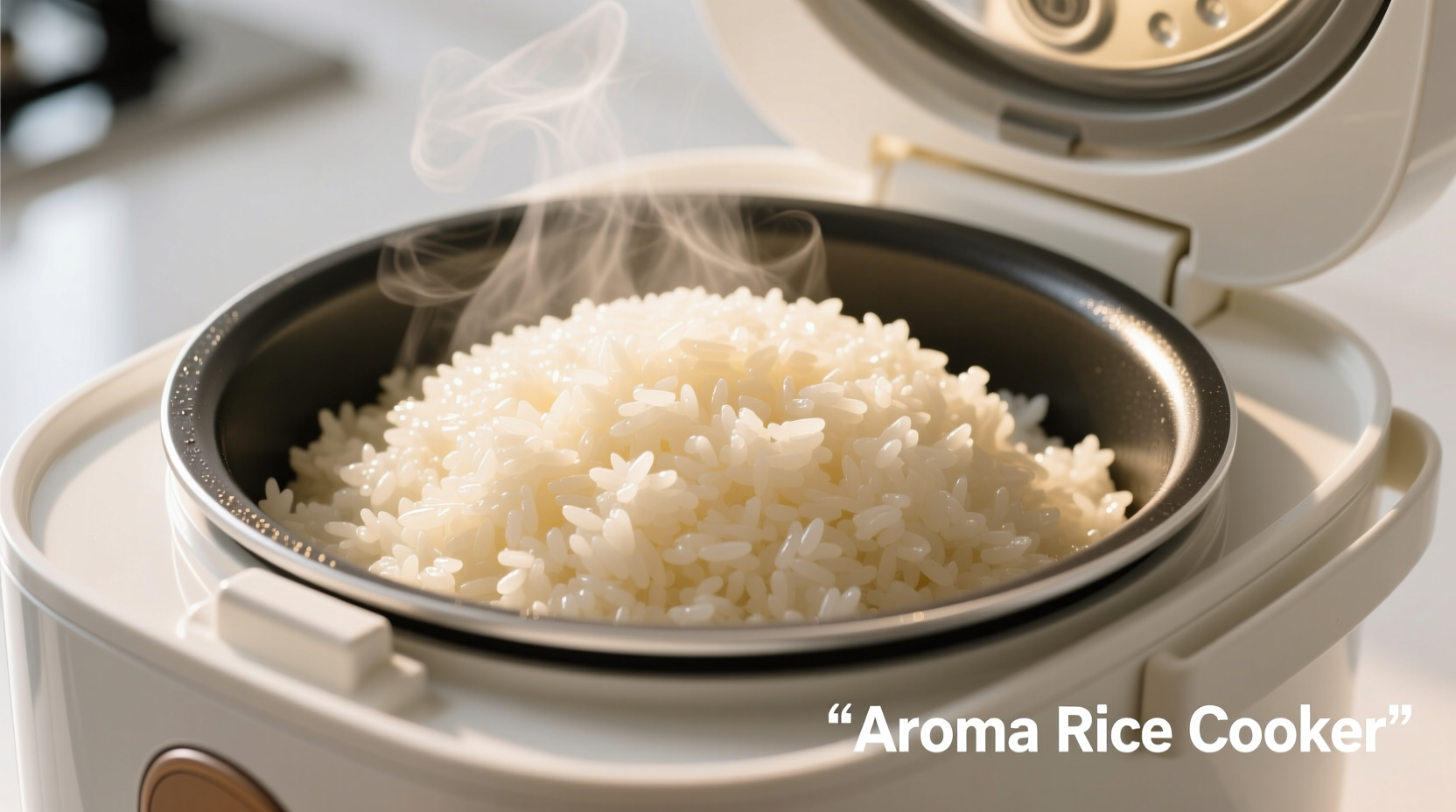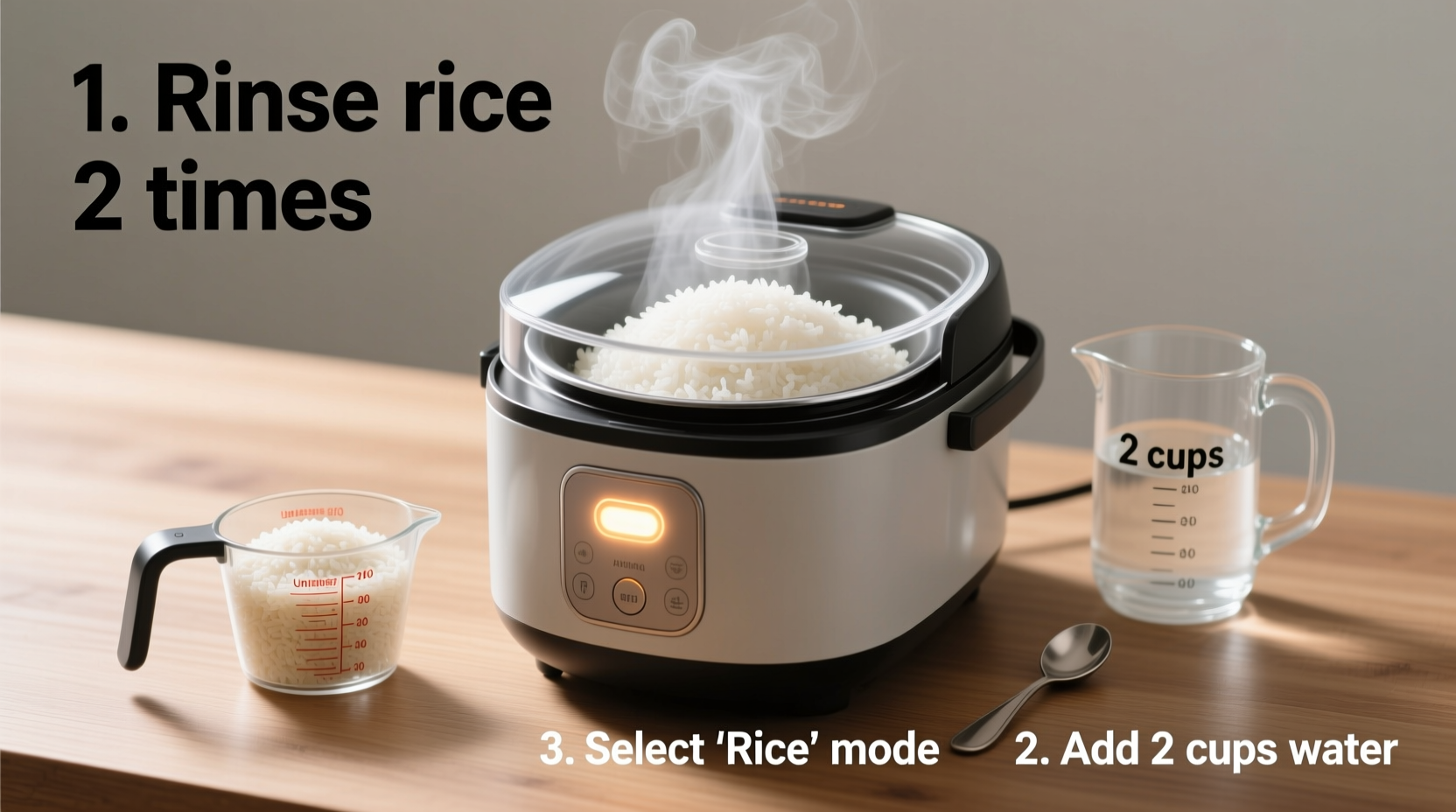Nothing beats the convenience of an Aroma rice cooker for consistently perfect rice. Whether you're preparing fluffy jasmine for Thai curry or sticky sushi rice for homemade rolls, mastering your appliance eliminates guesswork and delivers restaurant-quality results every time. This guide reveals the precise techniques that transform basic ingredients into perfectly cooked grains.
Why Your Aroma Rice Cooker Makes Perfect Rice Simple
Rice cookers like Aroma models solve the biggest challenges of stovetop rice cooking: inconsistent heat and incorrect water ratios. The appliance's thermostat automatically adjusts temperature throughout the cooking cycle, ensuring even absorption. According to USDA cooking guidelines, rice requires precise water-to-rice ratios that vary by grain type—something your Aroma cooker handles through specialized settings.
Essential Preparation Steps Before Cooking
Proper preparation determines your success more than any other factor. Start with these critical steps:
- Rinse thoroughly—Wash rice under cold water until it runs clear to remove excess starch that causes gumminess
- Soak when needed—For basmati or jasmine, soak 20 minutes for longer, separated grains
- Measure accurately—Use the cup provided with your cooker, not standard measuring cups
- Check your cooker—Ensure the inner pot is properly seated and heating element is clean
Water-to-Rice Ratios for Different Varieties
| Rice Type | Water Ratio | Special Instructions |
|---|---|---|
| White rice (long grain) | 1:1¼ | No soaking required |
| Jasmine rice | 1:1¼ | Soak 20 minutes for best results |
| Brown rice | 1:1½ | Add ¼ tsp salt; requires "brown rice" setting |
| Sushi rice | 1:1⅓ | Add 1 tbsp rice vinegar after cooking |
Step-by-Step Cooking Process
Follow these steps precisely for flawless results:
- Place rinsed rice in the inner pot and add measured water
- Select the appropriate setting: White Rice, Brown Rice, or Sushi
- Close the lid securely—never open during cooking cycle
- Press Start and let the cooker complete its automatic cycle
- Allow 10-15 minutes in Keep Warm mode before opening
- Fluff gently with a rice paddle or fork (never a metal spoon)
Context Boundaries: When Standard Methods Need Adjustment
While the standard ratios work for most situations, certain conditions require modifications. At high altitudes above 3,000 feet, increase water by 2-3 tablespoons per cup of rice according to Colorado State University Extension guidelines. When cooking in extremely dry climates, add 1-2 tablespoons extra water to compensate for faster evaporation. For older rice that's been stored more than 6 months, increase water slightly as grains become more porous over time.
Troubleshooting Common Rice Issues
Even with perfect technique, occasional problems occur. Here's how to fix them:
- Too wet/sticky—Reduce water by 2 tbsp next time; ensure proper rinsing
- Too dry/hard—Increase water by 2-3 tbsp; check for steam vent blockage
- Burnt bottom—Rinse inner pot thoroughly before cooking; avoid metal utensils
- Not fully cooked—Verify correct setting; older rice may need extra water

Serving and Storage Best Practices
For optimal texture, serve rice within 30 minutes of cooking. If storing leftovers, cool within 1 hour and refrigerate in airtight container. USDA Food Safety guidelines recommend consuming cooked rice within 4 days. When reheating, add 1-2 teaspoons water per cup of rice and use the Steam function for best results—never reheat multiple times.
Pro Tips for Restaurant-Quality Results
Professional chefs use these techniques to elevate basic rice:
- Add a teaspoon of rice vinegar to white rice for improved texture
- Toast rinsed rice 2 minutes in cooker before adding water for nuttier flavor
- Replace ¼ of water with coconut milk for fragrant Thai-style rice
- Cook rice with a pandan leaf for authentic Southeast Asian aroma
Frequently Asked Questions
Can I cook other grains besides rice in my Aroma rice cooker?
Yes, most Aroma models handle quinoa, oatmeal, and even steamed vegetables. Use the appropriate water ratios: 1:2 for quinoa, 1:3 for steel-cut oats. The "Steam" function works well for vegetables—place in the steaming tray with 1 cup water in the pot.
Why does my rice sometimes stick to the bottom of the pot?
Sticking usually occurs from insufficient rinsing (leaving excess starch) or using metal utensils that damage the non-stick coating. Always rinse rice until water runs clear and use only the plastic paddle provided. A light coating of cooking oil (½ tsp) before adding rice prevents sticking.
How long should I let rice sit after cooking before serving?
Allow rice to rest in the Keep Warm mode for 10-15 minutes after the cooking cycle completes. This crucial resting period lets steam distribute evenly through the grains, preventing mushiness when fluffed. Never skip this step for perfect texture.
Can I add seasonings directly to the rice while cooking?
Yes, but add seasonings to the water, not directly on rice. For best results, dissolve salt, broth powder, or herbs in the cooking water before adding rice. Avoid adding oil or acidic ingredients directly to the pot as they can interfere with the cooking sensor's accuracy.











 浙公网安备
33010002000092号
浙公网安备
33010002000092号 浙B2-20120091-4
浙B2-20120091-4